A Beautifully Dry Day At Lowville Park
Spring signals the return of so much – the return of the birds, the return of warmer weather, the return of trout fishing, and the return of conservation activities. For my first volunteer outing of 2013 I headed to Lowville Park in Burlington, Ontario, for a Trout Unlimited Canada event to work on Bronte Creek. With freezing temperatures still plaguing the area we wouldn’t be able to plant trees, but a garbage cleanup and some live staking after the ground thawed would be a great way to start the year.
My first workday at Lowville Park came last year when I was part of group of volunteers that planted 1,000 trees and shrubs in the pouring rain. I had way more fun than I should have and we were all covered in mud by the end of the day. Still, I was really happy to find we had beautiful sunny and dry weather for this event. I was even happier that Darrell didn’t have to work on this day and was able to join me.
A group of seven volunteers showed up and Beth Anne Fischer, project biologist with Trout Unlimited Canada, took us on a walk through the park to explain the Bronte Creek Watershed Renewal Program. Bronte Creek was chosen as one of five national projects that Trout Unlimited Canada wanted to undertake. It’s status as an important Lake Ontario tributary, the promise it showed for being returned to a healthy coldwater system, and the willingness of local municipalities to work with Trout Unlimited Canada, made Bronte Creek an excellent choice.
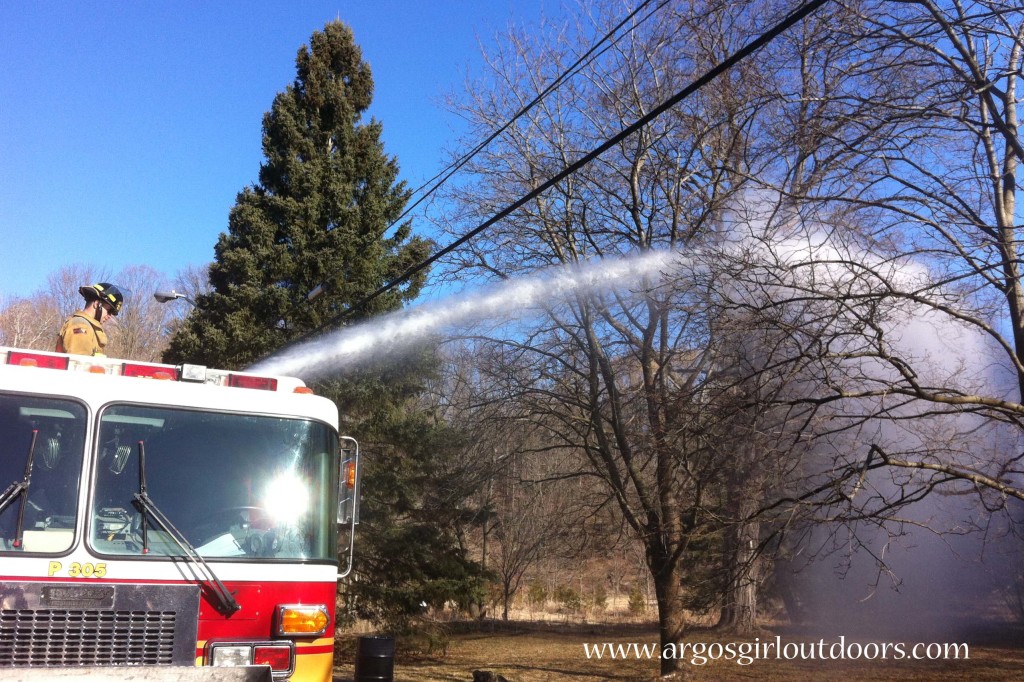
That’s not a sight I see very often! It was neat to come across this training exercise while on our walk.
Bronte Creek’s headwaters are in Morriston, Ontario and it eventually drains into Lake Ontario. Many local anglers have fished Bronte Creek, or launched in Bronte Harbor on their way to chase salmon, rainbow trout, and brown trout. Historically, Bronte Creek was a healthy coldwater ecosystem that was home to brook trout and Atlantic salmon. Deforestation, online ponds, and dams have all contributed to raising the water temperature which made the system inhospitable for coldwater species. TUC is hoping to change this. The work at Lowville Park has included projects aimed at restoring water quality – such as adding riffles and pools, as well as bank restoration projects – such as tree planting and bank stabilization. TUC also has people on-site all summer long to educate the public and explain the importance of the work being carried out. This work is having an immediate impact as brook trout have been reported in the park for the first time in over 55 years, and the Atlantic salmon program has added Bronte Creek to its stocking sites.

The other side of the riffle. The riffles are important for oxygenation purposes, as well as keeping the water flowing, which keeps the temperatures cooler.
After our incredibly informative walk through the park with Beth Anne, we broke into teams, with some of us doing a quick garbage cleanup, while others started cutting willows for live stakes. Although there was a bit of garbage to cleanup – beer bottles, styrofoam cups, plastic bags, and more – on the whole, Lowville Park had remarkably little litter. Darrell and I collected less than one full bag of garbage. In comparison, at another park along Bronte Creek last fall, I collected four bags of garbage, much of which was left by anglers.

There’s no way to keep Darrell focused on the work at hand when water is nearby. He was constantly looking for fish. Where he’s standing is another example of the restoration work. The logs and trees have been placed here to direct the flow of the river, act as a debris-catcher, and provide habitat for fish.
After completing our cleanup it was time to trade in garbage bags for snips, and take cuttings off some willow trees for live stakes. Live staking is an extremely useful tool for restoration work. For no extra money, several new trees can be propagated and place in areas that need root structure to stabilize the ground. This was not a new task for Darrell and I, having been taught the technique at our Stream Steward Training, but it never ceases to amaze me just how easy and effective live staking is for bank stabilization.

Darrell takes a cutting from a willow. This not only benefits the existing tree by promoting further growth, but it will give us several live stakes to use.
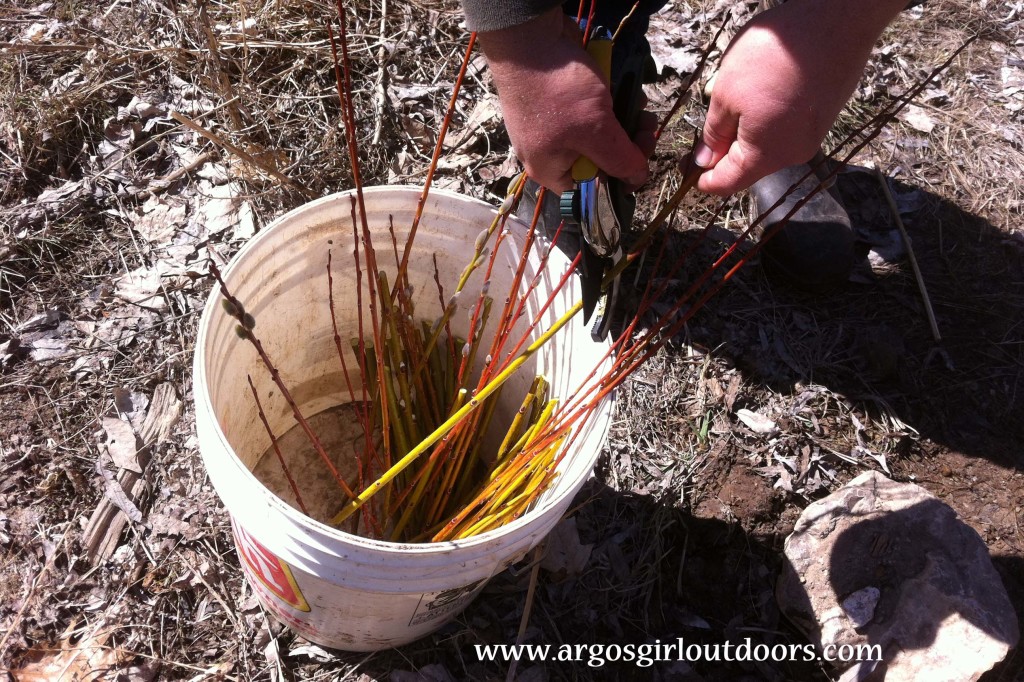
Each cutting is cut into smaller, 8 to 12 inch sections. It makes thing a whole lot easier if you remember to keep the stakes upright (so the bud is pointing up). That way you don’t plant them upside down!
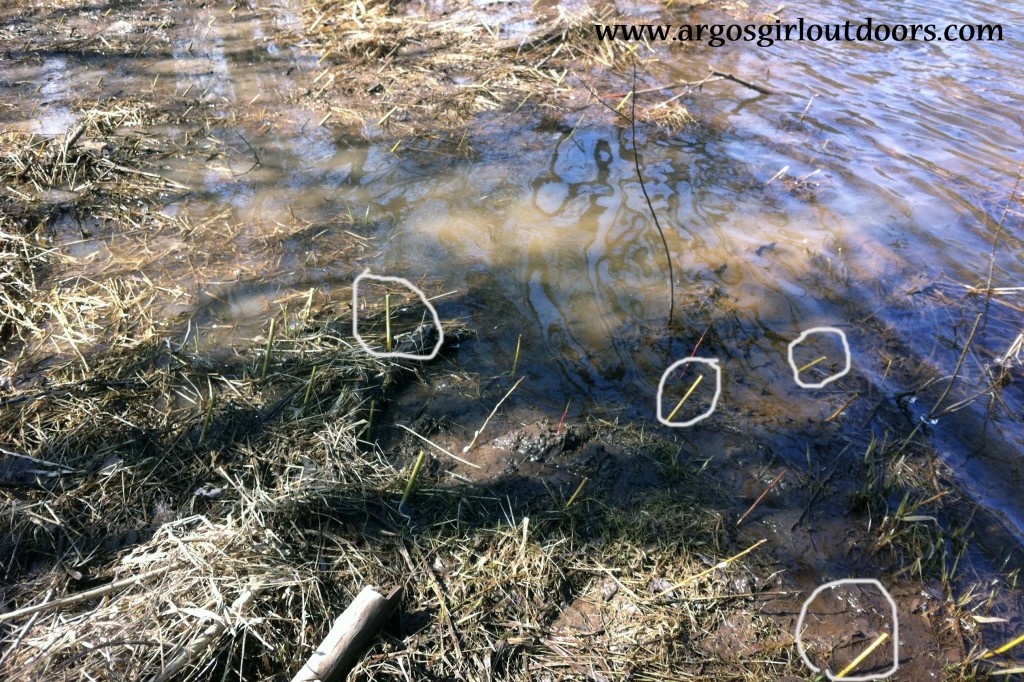
The finished product. I’ve circled a few of the stakes because they’re a little hard to see in this picture. The stakes are placed into the ground at a 45-degree angle, pointed towards the water. The majority of the stake is pushed into the ground, with only a few inches remaining above ground. This is done so the majority of energy is spent forming roots, while less energy is used by the buds above ground that will leaf out.
It wasn’t long before we had three sites staked and were wrapping up the day’s activities. We were able to stay dry and free of mud, with the exception of fantastic Frank, our doggie-mascot for the day. Belonging to another volunteer, Frank was an entertaining addition to our morning, and he had no qualms about walking in the mud or the frigid water.
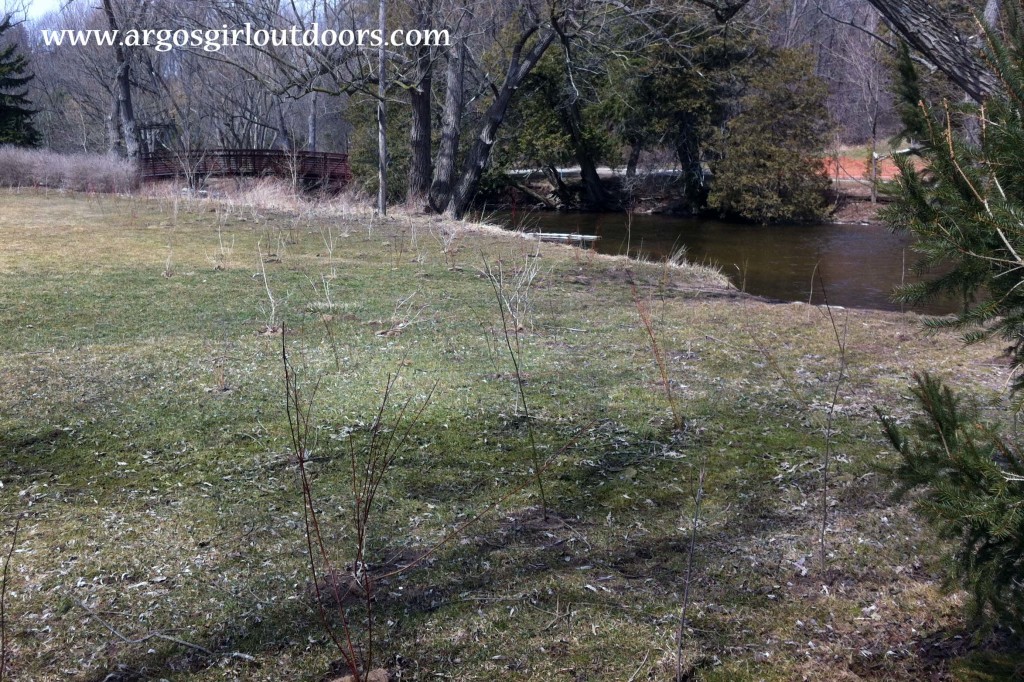
It was great to see the trees and shrubs we planted on that rainy day last year. Most of them are doing quite well and starting to bud out.
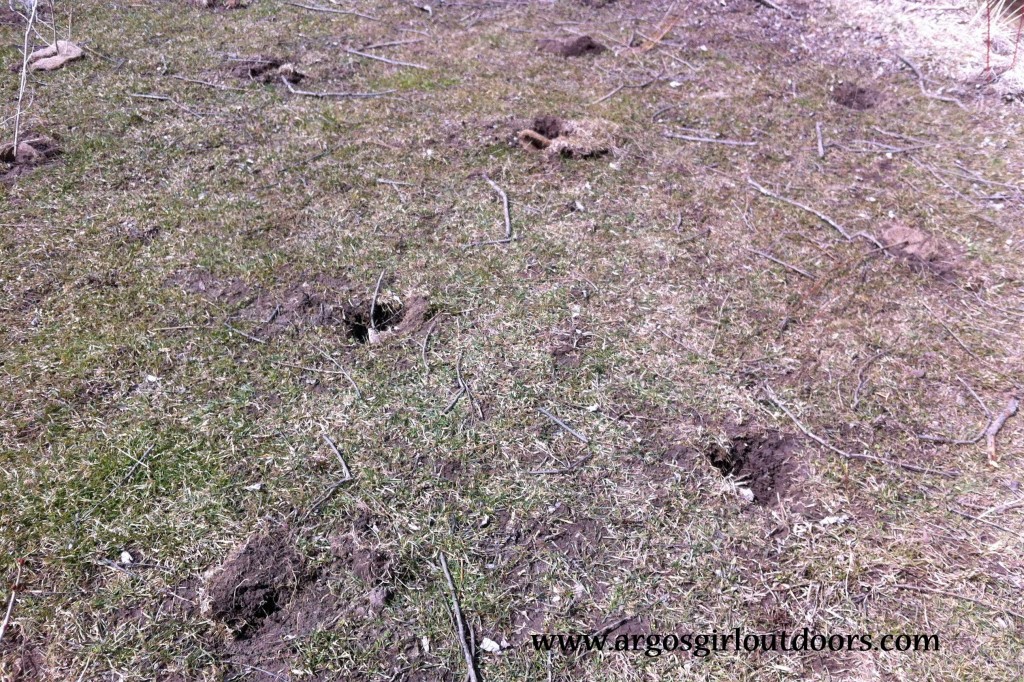
Unfortunately, not everyone seems to be happy about the restoration work. There were several empty holes where I remember putting plants in. It appears that someone has pulled them out.
It was a beautiful day to spend outside with a great group of people who were eager to do their part for creating healthy ecosystems. I’m so happy that conservation activities have started up again, and I can’t to get out to more events. Seeing the progress of the Bronte Creek Watershed Renewal Program is really exciting, and shows that something can be done to improve our ecosystems, in a sustainable way that allows the public to continue enjoying this resource.
Trout Unlimited Canada has several workdays and family fun days planned for Lowville Park this year. For more information check out their blog at brontecreekrenewal.blogspot.ca.
argosgirl
Latest posts by argosgirl (see all)
- Open Water Season Begins - March 16, 2024
- A Day Trip To South River - March 2, 2024
- New Year’s Camping At MacGregor Point - February 24, 2024
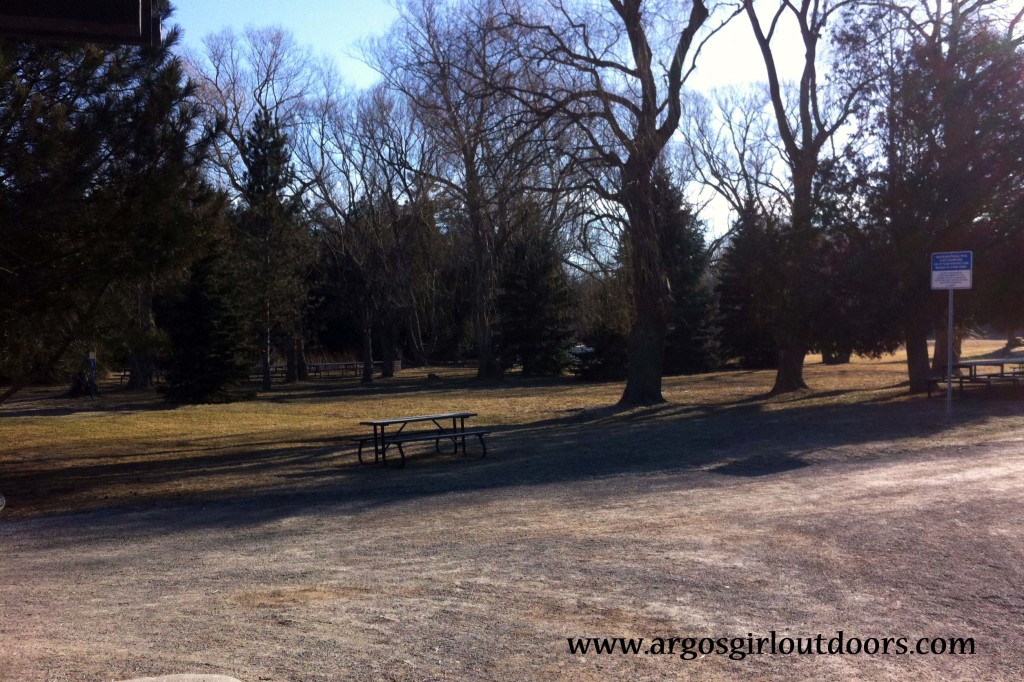
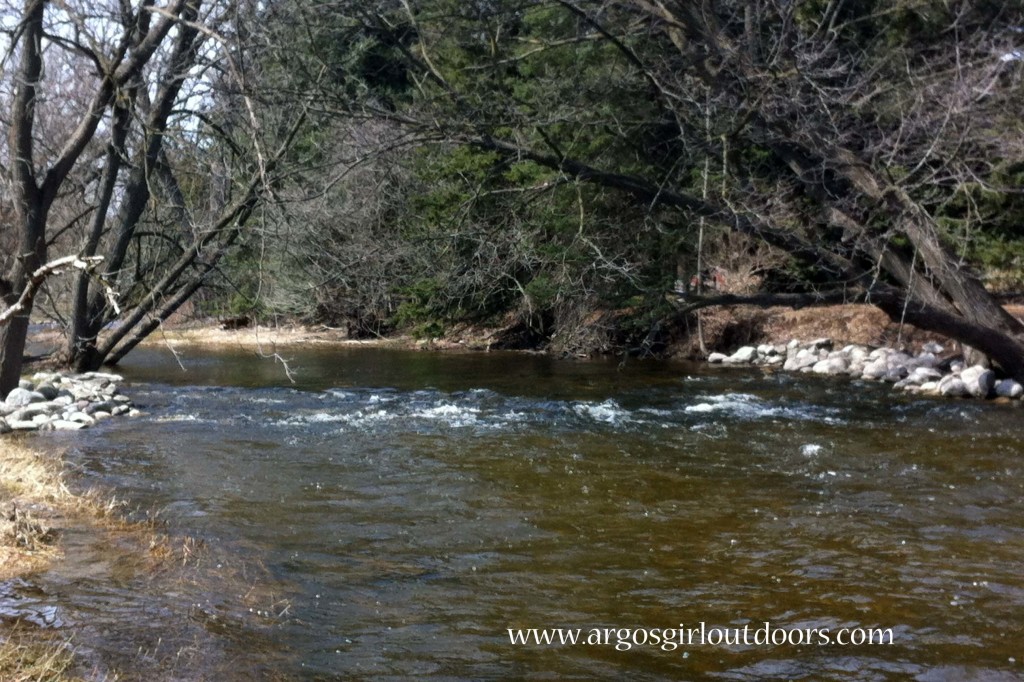
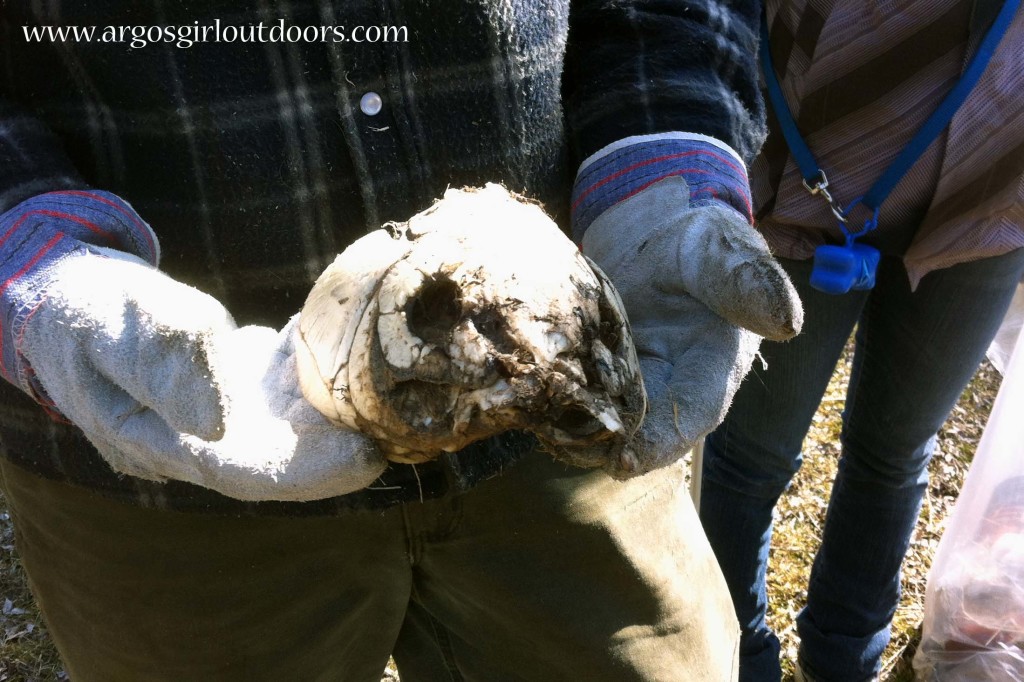



Thanks for an informative article on how to help restore our trout streams. You guys are doing a great job with clean-up, planting, and helping nature with the work of repair. I also want to add your posting to my blog roll.
I would love that! And thank you for the kind words. I really enjoy participating in restoration activities – it’s fun work, it’s nice to give back to the fisheries, and it’s great to see the results.